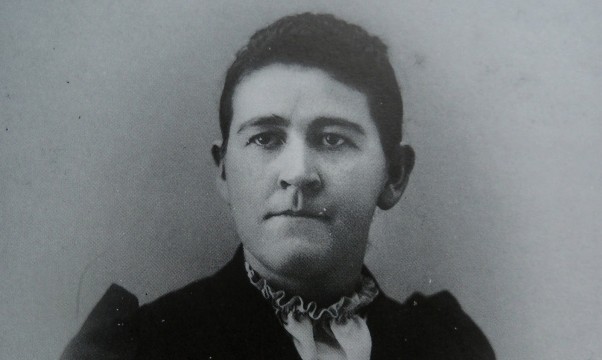 The Rebellion of Miss Lucy Ann Lobdell
The Rebellion of Miss Lucy Ann Lobdell
by William Klaber
Greenleaf Book Group. 304 pages, $24.95
HISTORICAL FICTION is always a toss-up between its two principal elements, history and fiction, and sometimes it’s hard to know how much of a good story is anchored in fact and how much is cut from whole cloth. In The Rebellion of Miss Lucy Ann Lobdell, William Klaber comes clean in an afterword and tells you how he’s fashioned a narrative based on scant historical records. But first he captivates you with a fantastic tale.
On the morning when she cut her hair, donned her brother’s clothes, and slipped from her parents’ house before daybreak, Lucy Slater left more than a wretched life behind. She also left her daughter Helen, which tore her heart. Still, the decision to flee wasn’t difficult. Three years earlier, Lucy’s husband had abandoned his family, leaving them with nothing and forcing them to live with Lucy’s parents. Since she’d married against her parents’ will, there was only hostility in their home—a situation made worse by the fact that they knew that Lucy was most comfortable in the woods, gun in hand, wearing her little brother’s clothes. That was unseemly for a lady in upstate New York in 1855.
Men had it so much better, in Lucy’s mind. They could live without a care, wearing breeches and shirts. They could hold jobs that paid a decent day’s wage. So Lucy boarded a train heading east and became Joseph Lobdell, a name she took from her grandfather.
Fearing that he’d be unmasked, Joseph kept to himself until he could catch a barge to Honesdale, Pennsylvania. There, he played the

violin for patrons in a downtown inn, and he started a dancing school for the young ladies of the growing city. Honesdale was also where Joseph fell in love with a seventeen-year-old named Lydia. But Honesdale wasn’t far enough from New York, and someone recognized Joseph for who he really was. He’d heard about opportunities in Minnesota, so, running for his life, he left Pennsylvania for the Midwest, and a new life.
In his afterword, author William Klaber says that he learned about a woman named Lucy Lobdell Slater from a writer-friend who wanted the story told. Klaber was given piles of notes and clips in which newspapers of the time gleefully wrote about Lucy’s life and death (the date of which is slippery). In particular, newsmen tittered about how, dressed as a man, Lucy apparently tricked a judge into letting her marry another woman. While that seemed to be factual, other details were sketchy and some were contradictory. Knowing that a dearth of solid information could hinder a biography, Klaber decided to fill in the blanks with fiction.
This book is none the worse for this decision. In giving Lucy control of her story via the voice of narrator—thus, lending her ideals and emotions—Klaber gives her a steady feminine vulnerability that surprisingly lingers from beginning to end, despite her tough resourcefulness and feisty single-mindedness. Those latter character traits lead to plenty of thoughtful introspection, mixed with a sense of breathless adventure that’s common in stories set in this time period.
There’s also a resigned wistfulness that adds a note of sadness to the story. Klaber’s fictional Lucy repeatedly suffers losses and setbacks and, while she seems stoic, readers come to understand that each blow is another soul-bruiser, which leads to the stunning conclusion. The real Lucy, after all, followed social conventions for the first part of her life: she married and had a child. Lesbianism and bisexuality were simply not considered as an option, while a woman dressing as a man wasn’t just scandalous but criminal.
Terri Schlichenmeyer is a freelance writer based in Wisconsin.





